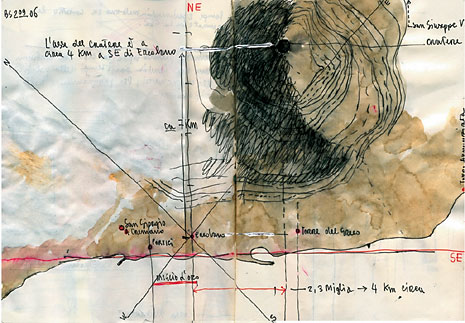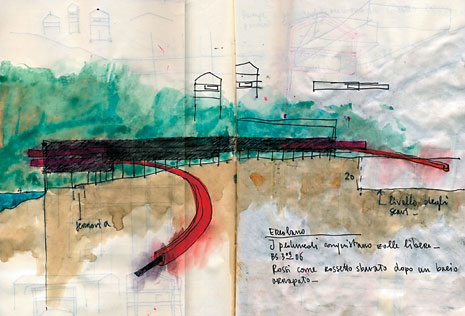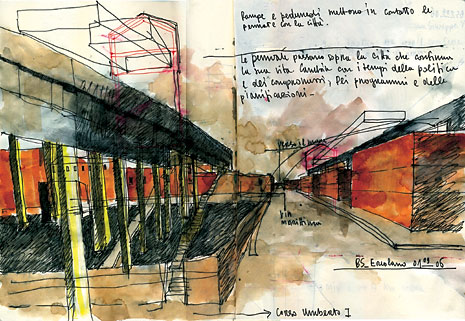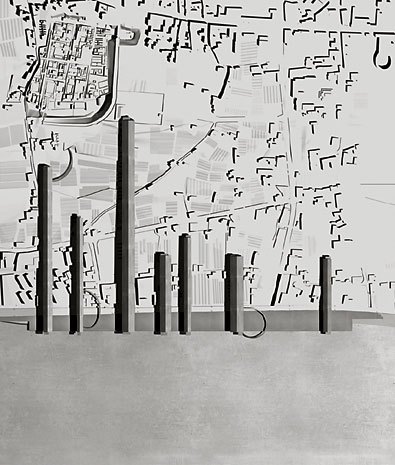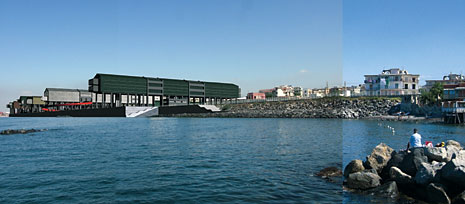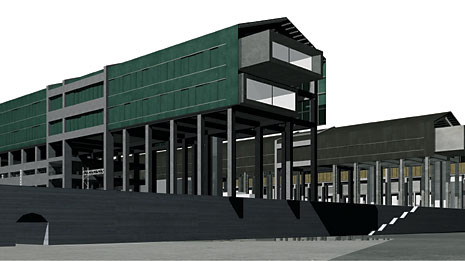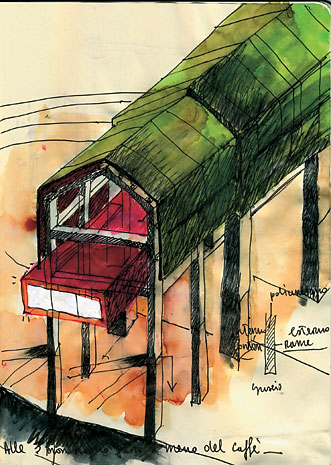Eugenio Tescione
Ah the violence of the conversion about hijacking roads and burying gods and the lives of souls; covering with new vision and perspective the road, the house, the room, the habit, the view kept in the corners of the eye when it turns to the everyday act… The shorter the time in which an eruption occurs the more violent it will seem: in a stroke, the catastrophe is enclosed in a point that joins perception, consciousness and denial of the disaster, the interruption of a familiar and reassuring continuity.
The volcano is so near and so quiet, a source of shade and a habitual presence in the corner of the eye: a thing possessed. Neither severe nor permissive, it is there, neither bad nor good… It was coincidence, pure chance that howled its presence at the same time when what had been solid in the corners started to become pagan and mistaken, something that could be buried in the subsoil of consciousness, destined to poke out later in faint superstition and domesticated to the new revealed thought. The city was buried, and from down there numerous gods howled protests against the one remaining master of the inner landscape. Then they calmed down, content to be remembered, to manifest themselves in the symptoms of crossed fingers, satisfied with the thought that sooner or later they would be brought back to light, excavated.
After the eruption, there is the unnoticed catastrophe unfolding in the time of a continuous and relentless conversion to a monotheism apparently free from mythical polytheistic conflicts, the time of the ego that decides for us: without anyone noticing, in time the violence of urban conversion has unfolded. The city has buried the City and the view out of the corner of the eye has been distorted; a habitual decay has set in, of eyes accustomed to a desert which like a mended unsightly blanket covers the bodies that lived and sleep in everybody’s conscience. The disturbing has become familiar. The necessity to be, to remain and not to be removed feeds and drives the design of the building.
Courageously elevated to the elegiac form of today is the ancient and simplest protection for the self and for the fruits that can be produced: the long slabs of the pennate, like some sort of vast new gable-roofed dwelling, a habitual sign in the corner of the eye looking at the cultivated fields, erected in the dimensions of a howl protesting against the silent, violence continued in time. They are like a poetical writing that eludes rhyme, uses everyday language and speech transformed into signs capable of being the visible object of the invisible extension of inner space: like things possessed that we didn’t know we possessed.
Horizontal skyscrapers rendering concrete lines of perspective joining land and sea, past and future; implying the buried and the subdued and saving it; emphasising the depth of the land and its mummified voices, the depth of the sea and its surface carrying into the distance the thought that sails on it; that oppose the removal (of the railway, the sea and the souls that live in silence). The project is the compression of an idea and a suffering into the space of a liquid crystal screen: two fingers touching the screen and accompanying the lines of the pennate, the raised hut-like slabs, with an elegant light movement despite painfully bearing the weight of thought, crossing supra-individual spaces and times, dimensions belonging to views in the corners of dry eyes, to the history beneath.
The gesture flowing gently onto this compression is charged with the violence that makes the protest loud, with a delicacy that strokes the water’s skin and draws on it an invisible line that vanishes at once. It is the motion of conscious thought which knows that the removed creates symptoms.
Eugenio Tescione a psychotherapeutic psychologist, he lives and works in Caserta. In 2003 his Architettura della mente (“Architecture of the mind”) was published by Testo&Immagine (now Marsilio). He has collaborated on a number of occasions with Beniamino Servino: on the subject of commissioning with L’invisibile della committenza (“The invisible of the commission”), 1997; on early 20th-century architecture in the province of Caserta with Papilonettes, 1999; and on homeless living with Two-ness, a work exhibited at the Venice Biennale in 2002.
Could the railway ever really be put underground?
A concrete base, level with the railway, traces a straight line between the Arturo beach and the Bourbon end of the Favorita. The base gives rise to a perpendicular system of buildings (called pennate, i.e. long slabs like gable-roofed dwellings) that extend like a comb towards the interior with a geometry of their own. The pennate step over the railway, over the houses and greenhouses, and above the streets and tanneries. And everything, below, remains unaltered. Located in the pennate are the functions necessary to the area: homes, offices, hotels, museums, libraries. There are seven pennate, but they could be more or fewer. They comprise a system of concrete (but also iron) frame/trestles which contain self-supporting boxes. The boxes are structurally autonomous from their encasing skeleton. When possible, the pennate descend to ground level with a volume. If not, it continues in the air, detached. (Beniamino Servino)
This project for Ercolano has been developed by request of the Fondazione Annali dell’Architettura e delle Città of Naples, and shown at the exhibition “20-06”, curated by Marco Casamonti and Luca Molinari, Palazzo Reale, Naples, 16.11.2006-15.12.2006.
